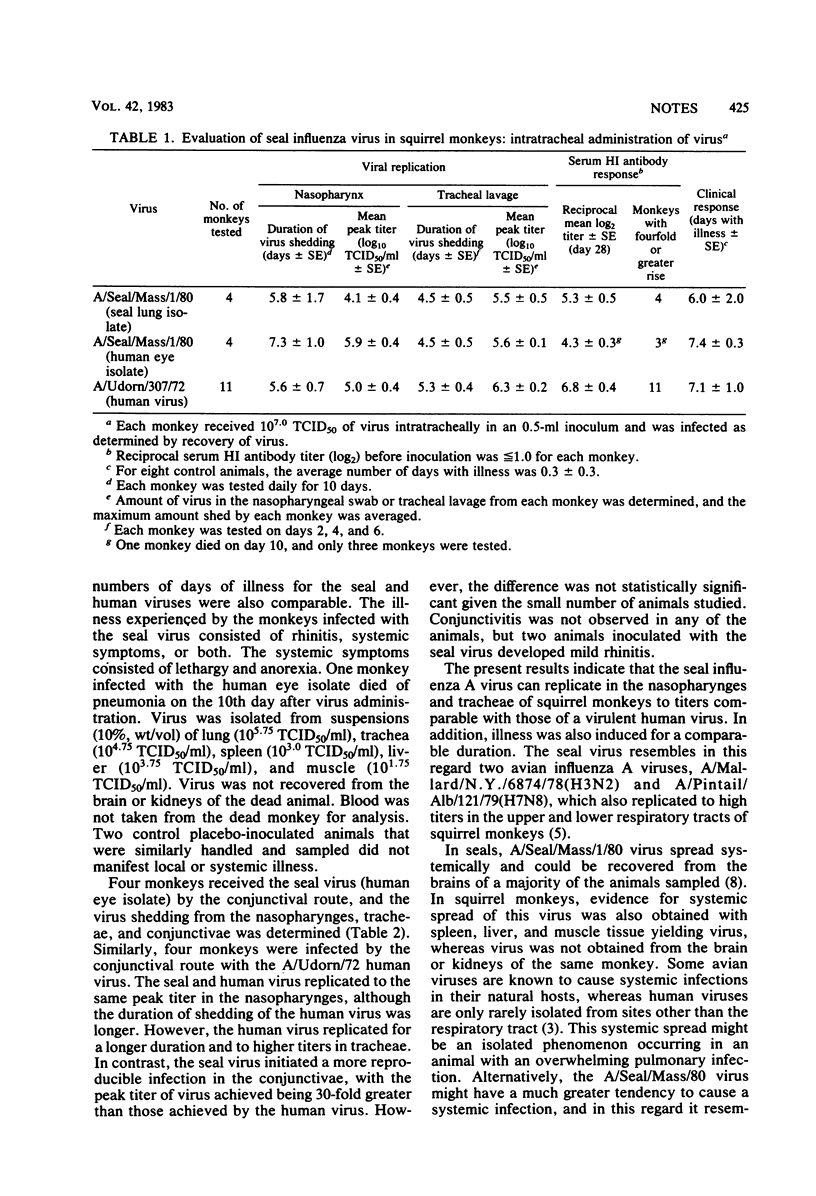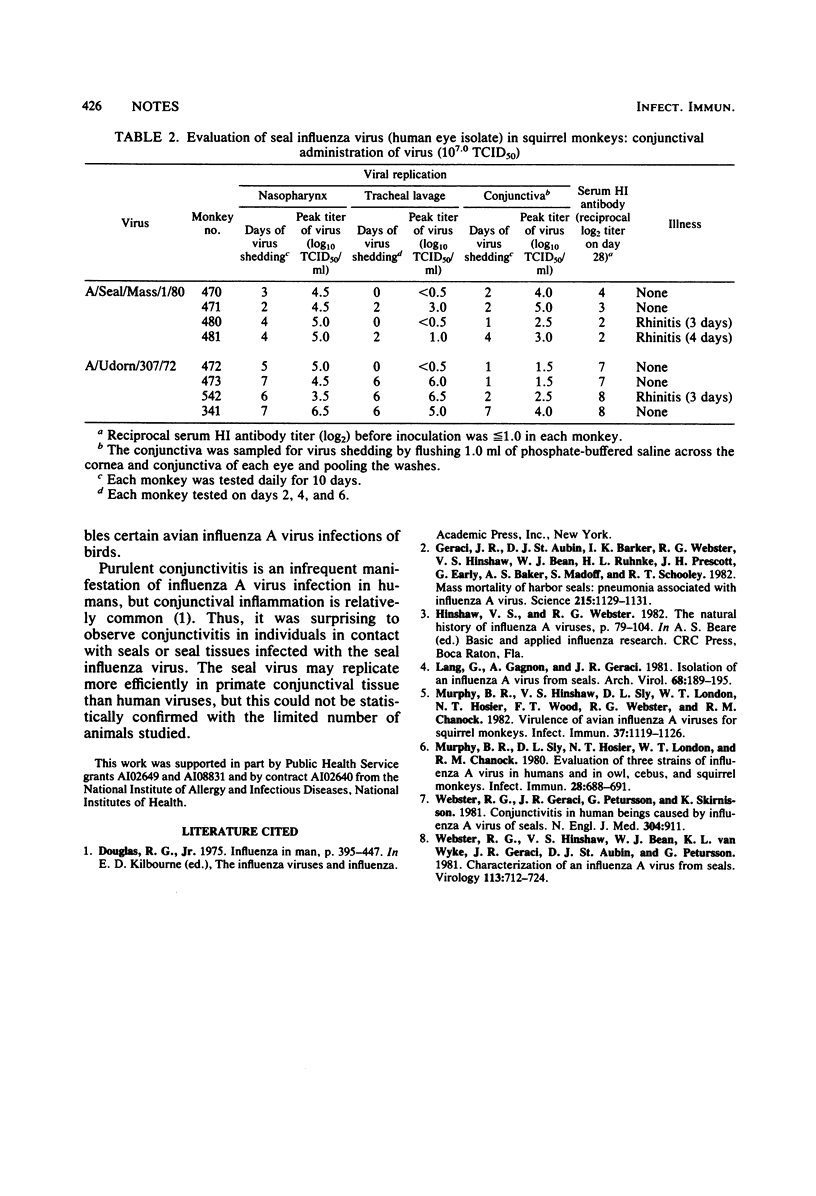Abstract
An influenza A virus isolated from seals [A/Seal/Mass/1/80 (H7N7)] and an isolate of this virus obtained from a human conjunctiva were evaluated for replication and virulence in squirrel monkeys. When the seal virus was administered intratracheally, it replicated in lungs and nasopharynges and induced illness almost to the same extent that a human influenza A virus [A/Udorn/72 (H3N2)] did. In one monkey that died of pneumonia, the seal virus was recovered from spleen, liver, and muscle as well as lung. After conjunctival administration in monkeys, the seal virus replicated to a peak titer in the conjunctivae 30-fold greater than that attained by the human virus, but this difference was not statistically significant. In contrast, the seal virus replicated less well than the human virus in the tracheae and nasopharynges when administered by the conjunctival route. These results indicate that the seal virus can replicate efficiently in primates, that it can spread systemically, and that it might differ from human virus in being able to replicate slightly better in primate conjunctival tissue.
Full text
PDF


Selected References
These references are in PubMed. This may not be the complete list of references from this article.
- Geraci J. R., St Aubin D. J., Barker I. K., Webster R. G., Hinshaw V. S., Bean W. J., Ruhnke H. L., Prescott J. H., Early G., Baker A. S. Mass mortality of harbor seals: pneumonia associated with influenza A virus. Science. 1982 Feb 26;215(4536):1129–1131. doi: 10.1126/science.7063847. [DOI] [PubMed] [Google Scholar]
- Lang G., Gagnon A., Geraci J. R. Isolation of an influenza A virus from seals. Arch Virol. 1981;68(3-4):189–195. doi: 10.1007/BF01314571. [DOI] [PubMed] [Google Scholar]
- Murphy B. R., Hinshaw V. S., Sly D. L., London W. T., Hosier N. T., Wood F. T., Webster R. G., Chanock R. M. Virulence of avian influenza A viruses for squirrel monkeys. Infect Immun. 1982 Sep;37(3):1119–1126. doi: 10.1128/iai.37.3.1119-1126.1982. [DOI] [PMC free article] [PubMed] [Google Scholar]
- Murphy B. R., Sly D. L., Hosier N. T., London W. T., Chanock R. M. Evaluation of three strains of influenza A virus in humans and in owl, cebus, and squirrel monkeys. Infect Immun. 1980 Jun;28(3):688–691. doi: 10.1128/iai.28.3.688-691.1980. [DOI] [PMC free article] [PubMed] [Google Scholar]
- Webster R. G., Geraci J., Petursson G., Skirnisson K. Conjunctivitis in human beings caused by influenza A virus of seals. N Engl J Med. 1981 Apr 9;304(15):911–911. doi: 10.1056/NEJM198104093041515. [DOI] [PubMed] [Google Scholar]
- Webster R. G., Hinshaw V. S., Bean W. J., Van Wyke K. L., Geraci J. R., St Aubin D. J., Petursson G. Characterization of an influenza A virus from seals. Virology. 1981 Sep;113(2):712–724. doi: 10.1016/0042-6822(81)90200-2. [DOI] [PubMed] [Google Scholar]
- Webster R. G., Hinshaw V. S., Laver W. G. Selection and analysis of antigenic variants of the neuraminidase of N2 influenza viruses with monoclonal antibodies. Virology. 1982 Feb;117(1):93–104. doi: 10.1016/0042-6822(82)90510-4. [DOI] [PubMed] [Google Scholar]


